|
|
Return to the Pests and Diseases Page
|
|
Pest
Management Aphids - Two-spotted Mite - Black Beetle - Monolepta Beetle (at bottom) I tend to spray as seldom as possible. Because we have twenty gardens of just hibiscus, a mono-culture, a patch of beasties soon spreads far and wide. We had a severe infestation of "Red Spider" or two-spotted mite particularly in the garden near the kitchen windows where the light seemed to attract them to that area. Of course, that black beetle, starved for pollen, invaded every bud two days early, burrowing in for first chomp! Suddenly - maybe over a week or two - we also had a massive invasion of aphids! I didn't photograph the infestation but the picture taken a day later shows how they shrivelled up! I saw that Avid (chemical: abamectin) was the recommended mite spray killing all stages - egg, nymph and adult - I've used it with excellent results in the past - this time full strength of 50mL to my 100L tank (a teaspoon to a 2-gallon bucket) and it is compatible with most other insecticides and fungicides. The effect is unsightly as all the affected leaves fall off and the new ones grow after spraying, but the resulting clean plant is worth waiting for. I read that Confidor (chemical: imidacloprid) was registered for aphids and beetle. Now Confidor has an oil base and I was advised by a horticulturalist to use oil as a spreader for the Avid for the best effect. Anyway, it was time to use Confidor at the 25mL to 100L higher strength. (Just a half a teaspoon to a 2-gallon bucket - get a graduated eye-dropper for 2.5mL to the bucket) I decided to make sure of the oil factor. My home-made white oil goes like this. Put 250mL Canola oil with 150mL of Sunlight or some other concentrated washing up detergent in a 1.2 litre soft-drink bottle - shake madly to aerate - and gradually fill it with water re-shaking to keep the emulsifying aeration working - it won't quite fill because of the suds!!! I then use 250 mL of this mixture in my tank - in effect just under 100mL of Canola mixture per 100L. Remember, hibiscus lose leaves if too much oil is used. 1 part to 200 is the recommended strength early or late in the day. My mix of 1:1000 seems enough as a wetter/sticker as the chemicals do the job. A stronger mix could be made, but this works for me. My day this time was very overcast but I was finished spraying each day by 9 am. The brew worked wonders. I look forward to some flowers in a few days. Sadly, the 400L is about AU$100 - the reason I usually hold off spraying till nearer show time. |
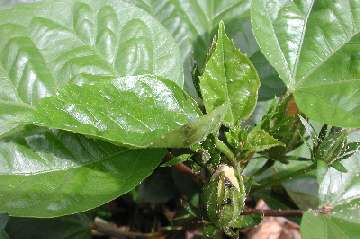 |
The aphids are no longer recognizable as the sucking horde of the day before | ||||
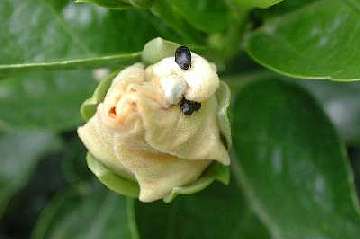 |
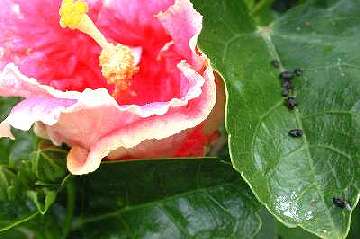 |
||||
| The voracious beetles showing how they burrow into a Shirley Howie in the race to the pollen | The effect of spraying seen a while later when the bodies have rolled out of the bloom | ||||
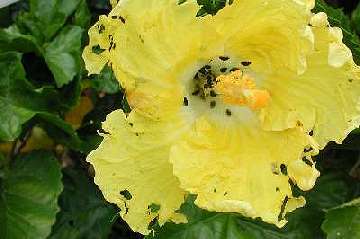 |
To the left, a poor Kinchen's Yellow has weathered two days of bombardment and a little spray (below, left) is poured from a jug into the bloom. One hour later, the effect (below) can be seen. | ||||
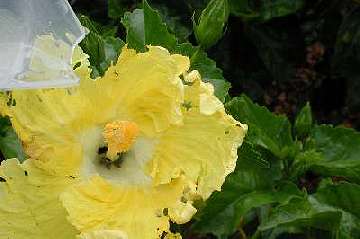 |
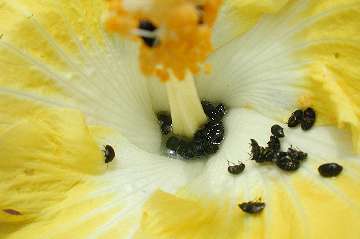 |
||||
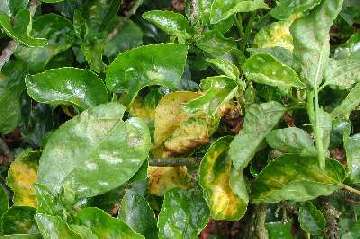 |
Sadly, the two-spotted mite
disfigures the plant and recovery takes quite a while.
The typical yellow blotching on the top of the leaf and
the fine webbing under indicates it is time to spray. I'm
about six weeks late!!!
|
||||
| Red-Shouldered Leaf-Beetle (Monolepta australis) | |||||
|
|||||
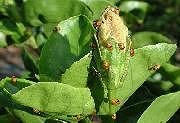 |
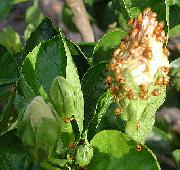 |
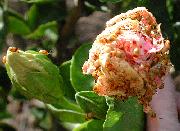 |
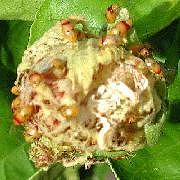 |
||
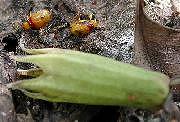 |
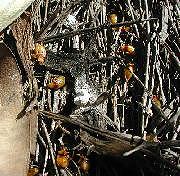 |
||||
Go to the Hotbed and Stenting Article on the Information Pages - Return to Pests and Diseases